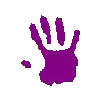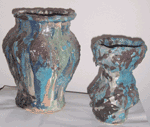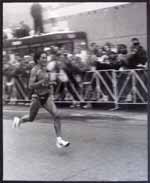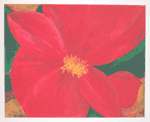












Art making is one of the most ancient forms of healing.
Everyone is creative, no matter what his or her limitations. Art therapy tries to advance that creativity and bring meaning and healing to a person’s life.
Art (in it’s many forms) is natural for people, and is an easy way for them to grow emotionally, intellectually, physically, and creatively at any moment. Periodically, expressing one's complete thoughts or needs that can be difficult or simply not possible through verbal communication.
Art and the creative process is a non-verbal language that exists within every individual. It is documented that the making of art can be soothing and stress reducing, allowing for healing as verbal and non-verbal communication can then be shared.
What is art therapy?
Art therapy is a human service counseling profession based on knowledge of human development, counseling, and psychological theories, utilizing art media, images, the creative process, and client response to create products that reflect the individual’s personal development, abilities, personality, interest, concerns, and conflicts.
This knowledge is implemented in assessment and client treatment, including educational, conflicts, self-awareness, reducing anxiety, and increasing self-esteem. In art therapy, there is no need to be 'good at art' to participate in positive psychological development.
Art therapy counselors are nationally credentialed, master’s and doctorate level therapists and licensed counselors who are specially and trained in art and psychology. They provide a service that no other mental health discipline provides by helping clients communicate with symbols and expressions in addition to traditional verbal modes.
How can art therapy help me or those that I serve?
Art is natural for individuals of ALL ages and ability levels. It is an easy way for one to grow emotionally, intellectually, physically, and creatively at any moment. By building on one’s natural energy and varied interests, art helps the client develop or explore their own identity through the creative process.
In my open-studio sessions, I try to be informal, asking neutral, open-ended questions to help the participant open-up and be themselves. Once a rapport has been established, areas to explore include personal strengths, goals, family, friends and other support persons, interests, school, and simply appreciating themselves as a whole person.
Some special areas may include personal crises, home conflicts such as divorce, blended families, sibling conflict, adoption, an individual’s special-needs, students who are disruptive at school, and various phobias, anxieties, low self-esteem, depression, or other needs.
What are some art methods used in art therapy?
Methods such as drawing, painting, beads, jewelry, photography, fabric, paper-making, and clay building are used to provide individuals the opportunity to explore personal difficulties and potentials through verbal and non-verbal expression and communication.
Art therapy sessions are a confidential, non-threatening place to relax, have fun, and feel free to share personal thoughts. In our open-studio environment, there is a quick introduction of the day's topic, the creation process, sharing your image with others and what the image may mean to you, followed by a closure of identifying themes.
Discussion is encouraged, as this increases an individual’s ability to relate with others in positive, supportive ways. All sessions have specific goals and are documented. Individual sessions include accepted testing if desired.
What’s the difference between a school art therapist and an art teacher?
Art education teaches children the technique, media skills, history, aesthetics, and production of art in our world.
With school art therapy, children are provided with a vehicle for self-expression, communication, and growth. Art therapy is less product-oriented, as the child’s experience during the process, form, content, and associations become important for what each reflects about the child.
School art therapists have intensely studied and worked with a variety of individuals, are able to service any student, regardless of age or need, and most also hold teacher’s licenses.

494 Dover Pond Dr. * Blacklick Ohio 43004
Phone: (614) 204-0974 * Fax: (270) 294-7835
Email: purplehandprint@yahoo.com
